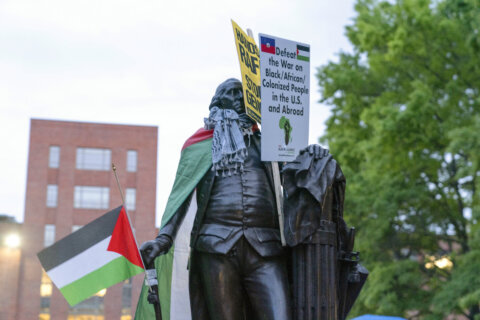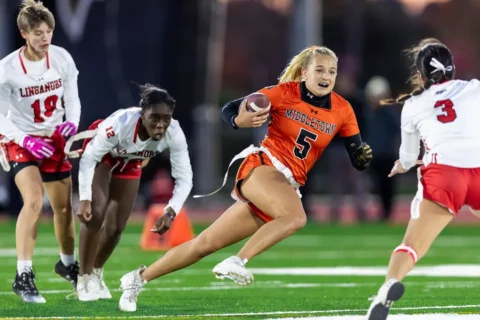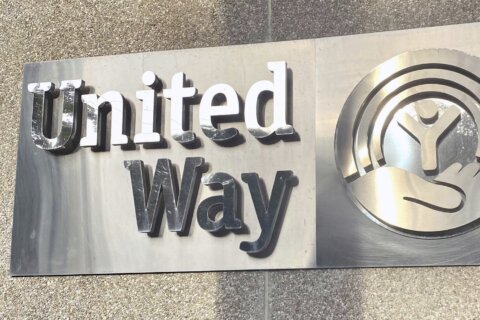WASHINGTON — Spring Break. For many college students it means taking off for sun-soaked partying at a beach — any beach. For one group of college students, it means getting really dirty —
but not in a way you might think.
More than 200 students with the organization “Students Today, Leaders Forever” came to Washington, D.C. from Minnesota, South Dakota, and a number of states in the Midwest. And instead of chasing cherry blossoms or pursuing internships, they’re knee-deep in a “Pay It Forward” tour — that’s actually the name of the program. And this group really is knee-deep; wading into the Lower Beaver Dam Creek in nearby Cheverly, Maryland, to haul trash from the waterway.
Megan Carmichael, a 19-year-old student from the University of North Dakota, and Dominic Paczkowski, a 21-year-old student at Minnesota State University, Moorhead, were among a group of students hauling tires lodged into the silt from the Lower Beaver Dam Creek in Cheverly. Students held onto a line secured to a tire in the creek, tug-of-war style, and the call went out “One, two, pull!” One after another the tires were piled up, weighed and documented with the rest of the trash collected.
Why, when they could be partying with friends in some sunny locale, were these students in old clothes — some in hip-waders — in an industrial park cleaning up a creek? Carmichael explained the point of a pay it forward tour is to do for others. Pulling her hands from the work gloves she wore, she explained, “Even though we don’t live here, it still impacts everybody else around here.” Paczkowski said the chance to visit Washington, D.C. was also a draw for students who do see themselves as future leaders. “Who wouldn’t want to be here?” And Cody DeWandeler, an 18 year old from Minnesota State Community and Technical College, said he was actually having a blast. “I’ve had more fun on this trip than I’ve had in my last 18 years — it’s been great.”
The kids are having a good time, and Anacostia River Keeper Mike Bolinder says the entire region is benefiting from the kind of work the students have done. They documented what was pulled from the creek, a tributary of the Anacostia River, for several reasons. “Characterizing the trash is real important for us, because we learn what’s in the trash,” and knowing what gets thrown away, and where it ends up helps inform policy makers on whether more regulations are needed, or if there are regulations — like anti-dumping laws — what’s working and if not, why not.
Helping residents connect to why their waterways matter is part of what Bolinder does. That’s why he’s always happy to bring people to the Anacostia watershed. “The more people have meaningful encounters with the Anacostia, the more we find they want to support restoration efforts.”
Clean waterways have a very direct effect on the region in ways you may not have thought about. If you spotted the news stories about the return of nesting bald eagles — the nation’s symbol –right in the nation’s capitol, Bolinder says you are getting the picture. For him, seeing the raptors return is something special. “Every time I see one swoop down and catch a fish, it makes me know that the work here that we’re doing is having an impact.”








